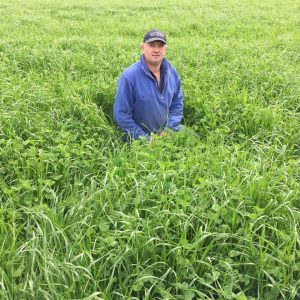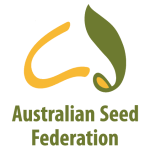Annual Ryegrass is the backbone of many hay/silage and grazing mixes across the South East and Western Victoria. Annual ryegrass offers fast and affordable forage with varieties ranging from early to very late, so there is definitely a variety available to suit your needs.
Which to Sow - Tetraploid or Diploid?
By the natural order of nature, ryegrass is referred to as a diploid. By introducing the chemical compound colchicines, plant breeders have found they can double the number of chromosomes that occur naturally from 14 to 28. The result of this process created a new breed of ryegrass called tetraploids. These tetraploid ryegrasses are generally darker in colour and carry much higher water content. These new characteristics are generally associated with increased palatability and in some cases have been linked with greater animal performance.
Tetraploids are generally considered to be suited to conditions of: 
• Higher fertility
• Moist or irrigated conditions
• Relaxed grazing management (leaving a residual after grazing 5 - 7cm)
• Grazing rotations between 21 - 30 days approx
• Ideal sowing rate between 20 - 30kg/ha
• Approximately 350,000 seeds per kilogram
Diploids are generally considered to be suited to conditions of:
• Lower fertility
• Drier, unpredictable seasonal conditions
• Shorter grazing intervals of 14 - 25 days
• Closer grazing (Leave a residual of 2 - 5cm)
• Recommended Sowing Rate of 10 - 20kg/ha
• Approximately 500,000 seeds per kilogram
As a rule of thumb, in the South East region, diploid varieties have been the preferred option for top quality hay mixes. They are fi ner in the stem and usually dry quicker. They are more erect growing, tend not to out compete their clover companions and give higher quality hay as a result. Through local trials at our research farm we have found diploids can be slower to establish when sown late in the season compared to tetraploid varieties.
| Variety | Sowing Rate | Regrowth | Potential Maturity | Attributes |
|---|---|---|---|---|
| DIPLOIDS | ||||
| Safeguard | 10 - 20 | Good | Very Early | Annual ryegrass toxicity (ARGT) resistant, strong winter growth, prolific re-seeding variety. |
| Wimmera | 2 - 5 | Poor | Early | Excellent regeneration in light sandy soils, shows some salt tolerance, good low rainfall option. |
| Fuze | 10 - 20 | Excellent | Late | Fast establishment, densely tillered with fine leaves. Excellent late season production. |
| TETRAPLOIDS | ||||
| Betta Tetila | 15 - 25 | Poor | Early | Very aggressive winter growth, excellent option where spring rain is unreliable. Very reliable producer in all conditions. |
| Adrenalin | 15 - 25 | Good | Mid | High winter yields, excellent late season quality, capable of several grazings or cuts. |
| Prine | 15 - 25 | Excellent | Mid/Late | Prolific winter production with the ability to go late into spring/early summer if moisture permits. Has been benchmark for production in our region since being introduced 4 years ago, also an excellent re-seeding variety. |
| Jivet | 15 - 25 | Good | Mid/Late | Slightly later than the old Winterstar, exceptional feed quality, excellent rust and disease resistance. |
| Ascend | 15 - 25 | Excellent | Late | Winterstar 2 replacement, bred to have more winter production and maintain late season quality. |
| Dash | 15 - 25 | Excellent | Very Late | Very fast establishing annual, bred for high winter production with late finishing quality. Very late heading variety will offer multiple high quality hay/silage cuts. |









